The Greatest Screen Fairy Tales
None
Once upon a time…
...Fairy tales became the Next Big Thing. Sure, they’ve been around a while in one shape or another, but they seem to be everywhere these days – from recent films Beastly and Red Riding Hood to not one but two Snow Whites on the way to the big screen. And then there’s Grimm and Once Upon A Time (boasting yet another Snow White) both coming to a TV screen near you soon (as long as you wish upon a star, natch).
Jayne Nelson checks out some classic big and small screen fairy tale adaptations which are essential viewing for a happily ever after...
The Troll Hunter (2011)
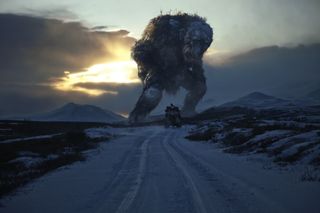
Remember the Three Billy Goats Gruff? They needed to cross a bridge but were each harassed by the fearsome troll who lived underneath it, until the troll received his comeuppance when the final goat headbutted him off the bridge (seems cruel to us – the poor bugger was only hungry). It’s hardly the most complex of fairy tales but the surprisingly gritty Norwegian drama The Troll Hunter chose it as a starting point for a film that’s one of the best things to hit cinemas all year. ( Read our review here. )
Three amateur filmmakers decide to follow a poacher to make an expose on his life but discover he’s actually hunting giant trolls who secretly roam the Norwegian countryside. Hilariously, these creatures fart a lot, roar in outrage when they hear hymns and can smell Christians a mile off – all ingredients that make this straight-faced mockumentary a truly original monster movie. It’s the matter-of-factness that makes it so brilliant: the weary resignation of its “hero” as he kills yet another troll while the filmmakers gawp in shock, or the miserable weather that gives the action a feel that’s anything but fairy tale. Absolutely magical, in a really grubby kind of way...
.
.
Sign up to the SFX Newsletter
Get sneak previews, exclusive competitions and details of special events each month!

Enchanted (2007)
Future Lois Lane Amy Adams is suitably enchanting in this unapologetically silly fantasy from 2007, which sees her cartoon princess Giselle being sucked into real-life New York thanks to some magical hocus pocus from wicked witch Susan Sarandon. Its gimmick is that the film moves from a cartoon into real life – neatly done – but it’s Giselle’s bubbly optimism and refusal to quite literally live in the real world that makes it such a delight.
This is a heroine who’ll start dance numbers in the middle of Central Park, whip herself up a foofy outfit from an old pair of curtains and gleefully wait for her prince to come until she gets her happily ever after, dammit. James Marsden as the prince in question is adorably goofy but, sadly, the film does strike one duff note: Grey’s Anatomy heartthrob Patrick Dempsey as the New Yorker who falls for Giselle. He looks as bewildered by his casting as Cinderella would look wandering into a rave instead of a ball. Still, it’s not like he has to do much, and everybody’s looking at Amy Adams anyway.
Best moment? When Giselle tries to re-enact Snow White’s house-cleaning shtick in a New York apartment, but instead of getting help from cute birds and fluffy bunnies, she summons a load of sewer rats and manky pigeons.
.
.
Hans Christian Andersen (1952)
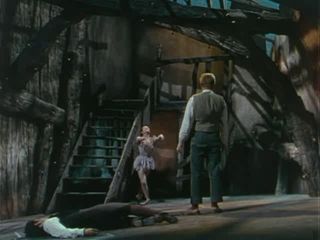
One of the greatest fairy tale scribblers who ever lived was brought to life on screen by Danny Kaye in this charming 1952 musical. Even if you’ve never seen it, you’ll probably know more of its song lyrics than you’d care to admit: “There once was an ugly duckling...” for starters. (Did the ending of that song make you cry as a kid? Just us? Okay, then.)
As a biopic it’s mainly an excuse for Danny Kaye to goof around in a hugely unrealistic (yet suitably fairytale-esque) Copenhagen, but there are some glorious magical moments – not least the mournful song “Inchworm”. Although actually seeing said inchworm while Mr Andersen sings to it would’ve been a nice touch, no?
And because we know you want to sing along, here’s that duckling for you...
.
.
The Company Of Wolves (1984)

Fairy tales aren’t all fairy godmothers, handsome princes and happy endings, you know. Remember the little matchgirl? She froze to death! The little mermaid? Committed suicide! The list goes on, and no film successfully captured the dark side of these not-so-innocent fables as The Company Of Wolves .
Released in 1984 and directed by Neil Jordan, it’s a retelling of Little Red Riding Hood that’s a deeply twisted psychosexual nightmare, layered with all sorts of Freudian gubbins that’ll make you regard its young star as a scarlet temptress rather than an innocent villager on her way to see her Nan. Quite what the brothers Grimm (who adapted the ancient French tale) would have thought of it is a mystery is debatable, but we’re betting they’d have wet their knickerbockers at this big bad wolf...
(Warning: NSFW, disturbing content!)
.
.
The Shrek Movies (2001, 2004, 2007, 2010)

Several shoddy sequels and a decade of over-exposure have robbed the original Shrek of a lot of the joy that accompanied its release in 2001. Back then CGI films were still a novelty, Eddie Murphy’s vocal performance as Shrek’s pal, Donkey, wasn’t quite the cliché it is now (despite the fact he’d done the same job on a dragon three years before in Mulan ) and the film’s twist ending was just that... a twist.
That was the beauty of S hrek , you see. Or perhaps we should say “the ugly”, because of the way it turned everything on its head: Shrek was a hideous monster and the beautiful princess he rescues was actually one, too. It was a witty and unusual reversal of fairy tale stereotypes, and one the film’s writers had a lot of fun with. And as for nods to fairy tale lore – Shrek is crammed with everything from the three little pigs to Pinocchio in an all-out fairy tale orgy only, uh, without the sex.
Let’s hope the release in December of Puss In Boots helps bring some fresh blood to the franchise. Here’s the trailer – we like it!
.
.
The Storyteller (1988-91)
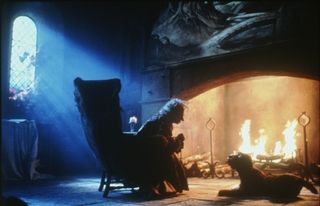
Opting to dramatise fairy tales that weren’t as well-known as your common-or-garden Hansel & Gretels or Sleeping Beauties, this dreamy ’80s TV series had two things going for it other than its rich subject matter: John Hurt as the storyteller in question and Jim Henson’s Creature Shop.
Essentially a less-skeletal Cryptkeeper , Hurt’s Storyteller oozed an air of charismatic menace even as he was supposed to be a kindly old man; the addition of a comedy dog as his sidekick was a welcome one. But the tales themselves were spectacularly done, filled with grotesque creatures and imaginative production design that did their inhabitants proud. If you’ve never seen The Storyteller you may as well have never seen Star Wars – it’s that important to the wide and vivid universe of fairy tales.
.
.
The 10th Kingdom (2000)
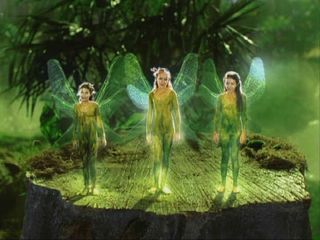
We’ve mentioned The 10 th Kingdom on numerous occasions in SFX over the years, mainly because we think it’s got one of the greatest opening sequences of any TV show ever. But it’s also a brilliantly inventive miniseries that has more fun than should probably be legal with the fairy tales we all grew up with – think of it as a live-action Shrek (it was made around the same time), only 417 minutes long and with one writer instead of eight.
The miniseries focuses on a young woman, Virginia (Kimberly Williams), and her dad after they get drawn into a fantasy realm filled with fairy tale characters. It really has it all: evil woodcutters, wicked witches, impossibly long hair (Rapunzel can’t have had an easy life, if Virginia’s experience is anything to go by) and, best of all, a human big bad wolf (played by Scott Cohen) who steals the entire show. It’s hilarious, it’s perfectly paced and is endlessly charming. Okay, so it kind of fizzles out towards the end but you know what they say: it’s all about the journey, not the destination. And what a journey this is – a kingdom all the family can enjoy.
.
.
Snow White And The Seven Dwarfs (1937)
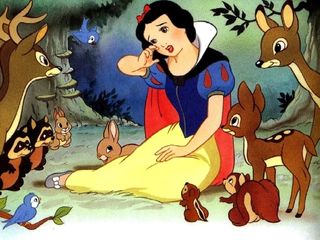
It’s fair to say that Walt Disney cornered the market in adapting fairy tales after the astonishing success of Snow White And The Seven Dwarfs in 1937 (the film even received a special series of Oscars: one big one and seven little ones). It’s difficult to comprehend quite what an achievement Snow White was back in the day. It was the first-ever full-length animated movie, and in colour to boot. As if that wasn’t enough, it also had – gasp! – sound, which allowed it to branch out into being a musical, too.
To modern eyes it’s a tad saccharine, the dwarfs are un-politically correct and Snow White’s voice (provided by Adriana Caselotti) is pitched so high it could make milk curdle. But as an adaptation of a classic fairy tale, it’s the definitive version: who could ever picture Snow White in anything other than that yellow and blue dress with the red bow in her hair?
Snow White was such a huge success for Disney that they kept churning out fairy tales for decades. After dabbling in various unsuccessful original stories in the ’70s and ’80s they went right back to them, too, with The Little Mermaid widely regarded as the film that put the struggling company back on the map. We won’t dwell on how they changed the ending of that tale, though; the company that was happy to knock off Bambi’s deer old mum apparently got sweaty palms at the thought of mermaid-icide...
So which is Disney’s best animated fairy tale? We could argue that out until George Lucas releases the original Star Wars on Blu-ray, so we’ll leave the decision to you:
.
.
Beauty And The Beast (1987-90)

You just have to browse YouTube’s soppy collection of romantic fan-made videos to see how much of an impact this ’80s show had upon the psyches of female viewers. While the original, 18 th -century version of Beauty And The Beast was a straightforward tale of kidnapping, imprisonment and love (these days we’d call it “Beauty And The Stockholm Syndrome”), the TV show was an allegory for racism and disenfranchisement with a central love story that softened any hard edges.
It was fabulously cast, with Linda Hamilton positively glowing as the lovestruck Catherine and Ron Perlman wearing his beastly makeup (designed by Rick Baker) with the ease that ended up propelling his career towards such roles as Hellboy. It all went a bit pear-shaped in season three, however, as Catherine popped her clogs, Vincent went doolally with grief and everybody stopped watching.
Still, the Vincent/Catherine shippers are working hard to fill up YouTube to this very day, so perhaps love does conquer all.
.
.
Hoodwinked (2005)
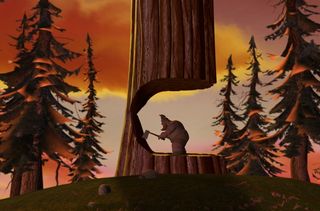
Poor old Hoodwinked , a sadly under-appreciated movie, mainly because its CG animation simply wasn’t in the same league as Pixar’s or Dreamworks’. Which is a shame, because it’s actually a wickedly funny, new twist on reimagining fairy tales, pitching Red Riding Hood as a police procedural mixed with a screwball comedy. More of a Police Squad -style gags-per-minute affair, rather than Pixar’s more multilayered, complex, emotionally-engaging approach, it’s still bubbling with great lines, bizarre images, and meticulously-choreographed slapstick action. If you’ve never seen it, and it pops up on TV, it’s well worth a watch, and these days, you don’t even notice the animation is primitive for 2005 – you just assume it was made six years earlier.
.
.
And there’s more...
Supernatural ’s “Bedtime Stories”, meanwhile, featured several fairy tales coming to (deadly) life, including a deliciously gory take on Hansel & Gretel, the blood-splattered tale of the three little pigs and Snow White (to which Dean observes in true Dean fashion, “Snow White? I saw that movie. The porn version, anyway. There was this wicked Stepmother. Woo, she was wicked...”).
And to use a contemporary example, Lost Girl is currently updating tales such the that of the Russian folk tale of Baba Yaga, a witch who lived in a hut that walked around on chicken legs. Strangely, they haven’t tried putting that on screen yet…
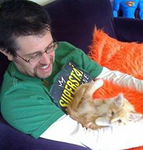
Dave is a TV and film journalist who specializes in the science fiction and fantasy genres. He's written books about film posters and post-apocalypses, alongside writing for SFX Magazine for many years.

Further pointing to the fact the Fallout TV series feels like Fallout 5, Todd Howard says: "It's a new entry, so just like we approach a game"

One Piece delivers a rematch for the ages in Luffy versus Lucci - but Eiichiro Oda has always made it clear that the World Government agent doesn't stand a chance
Most Popular











